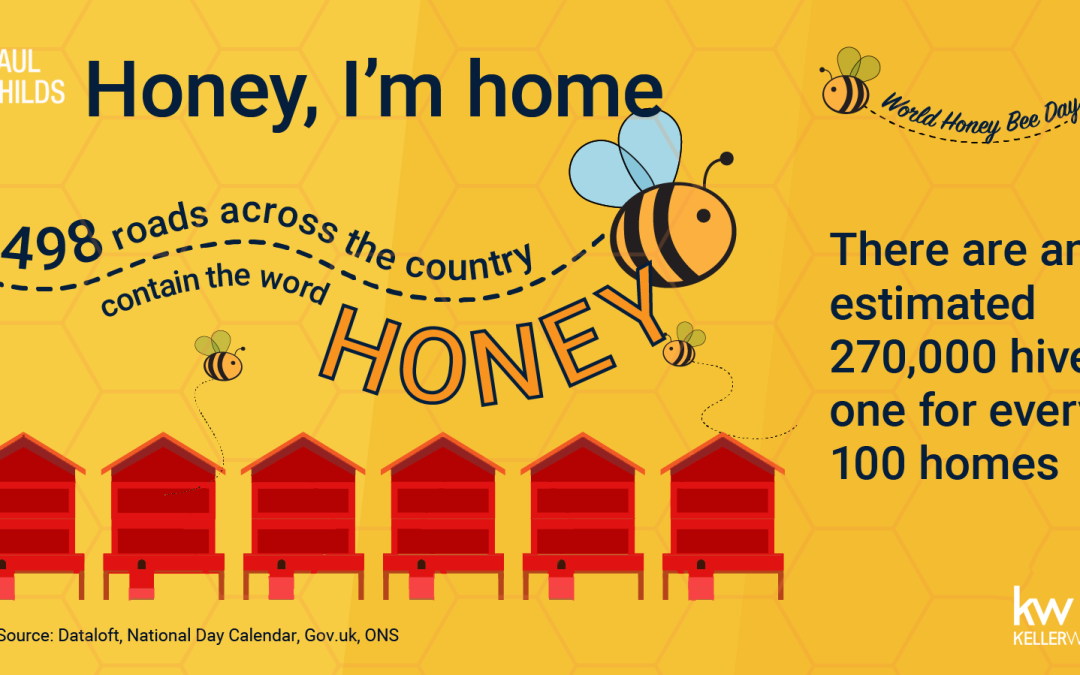Each year, on the third Saturday of August, a global festivity takes place that’s as sweet as nectar and as industrious as a hive. Recognised as World Honey Bee Day, or World Bee Day, this event unites beekeepers, honey aficionados, and nature enthusiasts to honour the vital role honey bees play in our ecosystems. Let’s delve into captivating facts about this significant occasion and the enchanting realm of bees.
A Bubbling Celebration: Origins of World Honey Bee Day
Inaugurated in 2009, World Honey Bee Day took its maiden flight in the United States. Its inception aimed to elevate awareness about honeybees’ irreplaceable role in pollinating crops and sustaining global food production. This day serves as a poignant reminder to safeguard these remarkable insects and their habitats.
A Sweet Link: Honey and Roadways
Did you know that several residential addresses across the country bear bee-associated names? The fascination with these petite and diligent creatures has forged a curious connection between roadways and honey. An astonishing 498 roads nationwide incorporate the term ‘Honey’ into their names. This intriguing nomenclature tradition mirrors the timeless reverence and significance bees hold in our society.
Hives and Households: An Astonishing Parallel
The United Kingdom stands as a testimony to its reverence for bees and their indispensable contribution. With an estimated 270,000 hives strewn across the nation, there exists approximately one hive for every 100 households. This impressive statistic underscores the pivotal role that beekeeping and pollination play in sustaining our environment and agriculture.
Nectar-Rich Flowers: An Imperative
Nurturing honeybees and other pollinators entails providing them with nourishing sustenance. Cultivating nectar-rich flowers can make a substantial difference.
Here are some stellar plants and blossoms to consider cultivating in your garden, thereby fashioning a haven for bees:
Lavender (Lavandula spp.): Renowned for its aromatic bouquet and exquisite purple blooms, lavender is a bee favourite. Its prolonged flowering season and copious nectar render it a prime attraction for an array of bee species.
Sunflowers (Helianthus spp.): Sporting radiant, sunny countenances and substantial blooms, sunflowers possess not only aesthetic allure but also a bountiful supply of nectar and pollen. They beckon a diverse community of pollinators, including bees and butterflies.
Coneflowers (Echinacea spp.): Resembling daisies, these vibrant flowers exhibit an assortment of vivid hues, furnishing bees with generous stores of nectar. Beyond their appeal to bees, coneflowers lend a distinctive and captivating allure to your garden.
Bee Balm (Monarda spp.): As the name suggests, bee balm ranks high on the list of bee and pollinator favourites. Its tubular blossoms are perfectly designed for bee access to nectar, enhancing your garden with vivid blooms.
Borage (Borago officinalis): Serving as both a culinary herb and a bee magnet, borage boasts star-shaped azure flowers brimming with nectar, beckoning bees with open arms.
Wildflowers: Native wildflowers wield a significant impact on bee populations. Evolved alongside indigenous pollinators, these plants furnish them with apt sustenance. Identify native wildflowers in your region to enrich your garden.
Bluebells (Hyacinthoides spp.): These bell-shaped blooms offer visual delight and a vital spring nectar source for bees. A woodland staple, bluebells bring charm to your garden.
Sage (Salvia spp.): Producing vibrant spikes of flowers, sage allures bees irresistibly. Beyond its bee-friendly trait, sage can also serve culinary purposes.
Thyme (Thymus spp.): Emitting a fragrant aroma, thyme yields petite, nectar-rich flowers. Ideal for herb gardens and ornamental landscapes alike.
Marjoram/Oregano (Origanum spp.): Beloved by bees, marjoram and oregano yield clusters of diminutive flowers rich in sustenance for bees.
Wild Cherry Trees (Prunus spp.): Trees contribute significantly to bee sustenance. Wild cherry trees, with their spring blossoms, beckon bees eagerly for nectar and pollen.
Crocus (Crocus spp.): These early bloomers offer a vital nectar source in spring, catering to bees awakening from hibernation.
When outlining your bee-friendly garden, strive for a varied array of plants blooming throughout the seasons, ensuring a continuous food supply. Also, reduce or eliminate the use of pesticides and herbicides, which can harm bees and other beneficial insects.
Local Honey: A Supportive Endeavour
Backing honey bees goes beyond flora planting; it involves mindful consumer choices. Opt for locally sourced honey to relish regional flavours while supporting local beekeepers. These dedicated individuals bear the mantle of sustaining bee populations and ensuring crop pollination for our food supply.
A Broader Perspective: Ecological Awareness
World Honey Bee Day transcends bee celebration. It underscores the interdependence of all living entities within our environment. The decline in bee populations, attributable to factors like habitat degradation, pesticide application, and climate shifts, reverberates across ecosystems and food security. By fostering awareness on this day, we contribute to the wider discourse on environmental preservation.
In closing, World Honey Bee Day transcends quirky festivity; it underscores honey bees’ centrality in our existence. Their role spans pollination of crops to gifting us the honey’s ambrosial nectar. These industrious insects uphold the fragile equilibrium of ecosystems. In our celebration, let’s pledge to support and protect these pollinators, embracing actions—big and small. Whether nurturing nectar-rich flowers, cherishing local honey, or disseminating their significance, we all contribute to the welfare of these vital creatures, perpetuating a vibrant world teeming with life.
Sources: RSPB, The Wildlife Trusts, Bee-Friendly Trust, #Dataloft, National Day Calendar, Gov.uk, ONS

